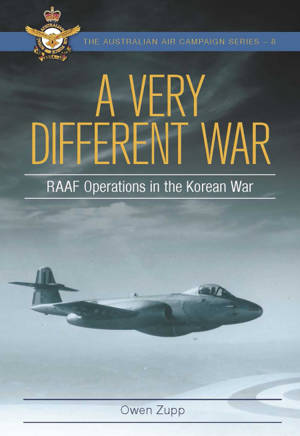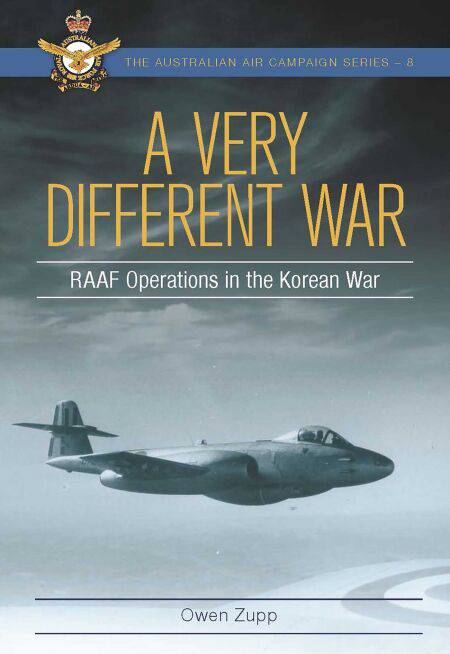
- Retrait gratuit dans votre magasin Club
- 7.000.000 titres dans notre catalogue
- Payer en toute sécurité
- Toujours un magasin près de chez vous
- Retrait gratuit dans votre magasin Club
- 7.000.0000 titres dans notre catalogue
- Payer en toute sécurité
- Toujours un magasin près de chez vous
12,29 €
+ 12 points
Description
The Korean War lies between the enormity of the Second World War and the controversy of Vietnam. Although it often slips through the cracks of history, it represented a global shift as two opposing ideologies clashed and the Cold War heated up. The fledgling United Nations was called to act, and Australia joined the 21 nations committed to supporting South Korea.
Within days of the North Koreans crossing the 38th Parallel, the RAAF was flying missions from its base in Japan. In the ensuing three years, the RAAF gained respect among its peers and the attention of the opposing military powers. When the war reached a crisis point, with UN forces pinned down and threatened with being pushed off the peninsula into the sea, the RAAF was at the epicentre.
During the war, the RAAF entered the jet age, and the transition was not without challenges and losses. Ultimately, a generation of RAAF leaders emerged from the ranks of sergeant pilots and junior officers who underwent their baptism of fire on the Korean Peninsula. Using No 77 Squadron operations as a timeline, this concise history of the RAAF involvement in the war examines the roles of the transport unit, nurses, ground crews, prisoners of war and those who still have no known resting place.
Within days of the North Koreans crossing the 38th Parallel, the RAAF was flying missions from its base in Japan. In the ensuing three years, the RAAF gained respect among its peers and the attention of the opposing military powers. When the war reached a crisis point, with UN forces pinned down and threatened with being pushed off the peninsula into the sea, the RAAF was at the epicentre.
During the war, the RAAF entered the jet age, and the transition was not without challenges and losses. Ultimately, a generation of RAAF leaders emerged from the ranks of sergeant pilots and junior officers who underwent their baptism of fire on the Korean Peninsula. Using No 77 Squadron operations as a timeline, this concise history of the RAAF involvement in the war examines the roles of the transport unit, nurses, ground crews, prisoners of war and those who still have no known resting place.
Spécifications
Parties prenantes
- Auteur(s) :
- Editeur:
Contenu
- Nombre de pages :
- 186
- Langue:
- Anglais
Caractéristiques
- EAN:
- 9781923004979
- Date de parution :
- 04-06-24
- Format:
- Ebook
- Protection digitale:
- Adobe DRM
- Format numérique:
- ePub

Les avis
Nous publions uniquement les avis qui respectent les conditions requises. Consultez nos conditions pour les avis.






